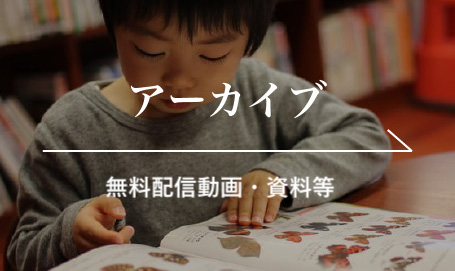< VOLUME 45, No.1 >
Yokoi Hiroko. A Study on Development of “Play Itself” : Over the Elucidation on the Mode of Being and the Transformation of “Play”.
Research on Early Childhood Care and Education in Japan, 2007, 45(1), 12-22.
The purpose of this study is to examine the development of play itself through elucidation of the mode of being and the transformation of play, based on play theory by K. Nishimura and H-G. Gadamer. The fundamental sense of playing is the medial one ; the basic structure of “play” is the movement backward and forward. In addition, “play” contains elements of self-presentation. Starting from concepts of “play” like these, the mode of being and transformation of “play” are examined through observing children’s play episodes. The results suggest that the transformation of “play” itself is not single-track way used commonly in the sense of the word “development”. It is necessary to reconstruct a developmental theory on “play” itself based on the appreciation of the mode of being of “play”.
Keywords: the development of “play” itself, the mode of being of “play”, the medical sense of “play”, self-presentation
—————–
Takazakaura Ayako. Case Study of the Formation of Intimacy in 3 -year-olds.
Research on Early Childhood Care and Education in Japan, 2007, 45(1), 23-33.
This study examines the process of intimacy formation between two 3 -year-old children. It examines observational data, focusing on “spontaneity”, “equality”, and “reciprocity”, which are factors in the developmental characteristics of 3 -year-olds and are needed to form intimacy in 3 -year-olds. The results show : (1)intimacy is formed through interaction based on equality in spontaneous relationships ; (2)intimacy deepens through play and reciprocal help ; (3)when intimacy faces a breakup crisis arising from conflict during play, other children assist with maintaining intimacy ; and(4)the assistance helps to extend peer relationships. Therefore, teachers must support the formation of intimacy through play, including a group -level view.
Keywords: intimacy, 3-year-olds, spontaneity, equality, reciprocity
—————–
Kasuya Nobumasa. Structure of Sand Play of Young Children and Its Understanding.
Research on Early Childhood Care and Education in Japan, 2007, 45(1), 34-41.
This study examines how our comprehension and interpretation of the structure of sand play of young children, focusing on the characteristics of sand. In this study, play is regarded as relationship between players and objects they play with. The relationship depends on the characteristics of the object. Case studies reveal that during play activities with sand, a unique relationship between the child and the sand is formed. These observations show that young children can continue to play with sand and make it more attractive because they understand the structure of sand play well. Sand play is a constructive play utilizing the potential of sand for young children.
Keywords: sand play of young children, structure of sand play, relationship between players and objects
—————–
Minowa Junko. Developmental Study of Young Children’s Sand Play to Make Mountains.
Research on Early Childhood Care and Education in Japan, 2007, 45(1), 42-53.
In this study, Japanese 3-5-year-old children who play with sand and make sand mountains are observed. As the result, 3-year-old children discover the nature or sand by playing with sand, and they learn how to make mountains using sand by watching their peers who play alongside them. Children as young as four can access this knowledge of the nature of sand and readily develop the skills to make mountain with sand. They also have social skills at this age that allow them to cooperate with peers in the making or sand mountains. Moreover, children of five developed cooperative play by dividing up areas of “work” in making sand mountains.
Keywords: sand play, 3 – 5 -year-old children, cooperative play, play and development
—————–
Hirose Toshiya. Effect of Indoor and Outdoor Preschool Spaces on Relationships among Children.
Research on Early Childhood Care and Education in Japan, 2007, 45(1), 54-63.
Children play indoor and outdoor, with the characteristics or these situations differing spatially and socially. Indoor and outdoor areas were classified according to characteristics such a common space, flat space, desks, and playground equipment. The differences in the social relationship between children were examined depending on space type. Participants were seventeen three-year-old and twenty five-year-old children in a preschool, who were observed in free play situations. Results indicated that three-year-old children had long interaction with others in the common space, and long solitary play in the flat space, in both indoor and outdoor situations, Five-year-old children had long interaction in both situations. Moreover, both age groups used the common space in outdoor situation to shift easily from proximity to interaction and to easily develop relations with various peers.
Keywords: peer relations, preschooler’s play, indoor and outdoor, spaces, environment
—————–









